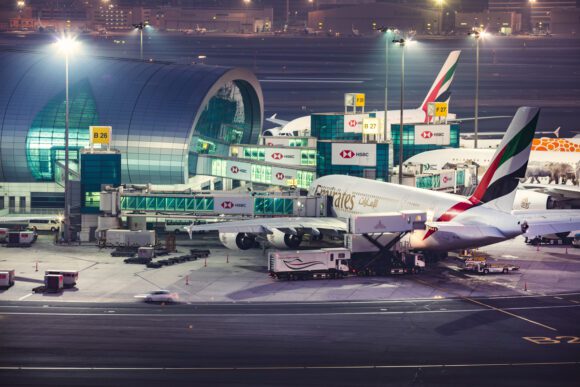The massive aircraft orders at the Dubai Air Show underscored the power shift in the airline industry to the Gulf, as the three large carriers, Emirates from Dubai, Etihad from Abu Dhabi, and Qatar Airways from Qatar, continue to expand and erode the traditional business of European and Asian carriers.
Several factors led to this power shift. First, the immense wealth and ready investment capital created after Richard Nixon took the US off of the Gold Standard for international settlements in 1971 and precipitated the first “oil embargo” that raised prices for energy and resulted in a financial bonanza for the Gulf oil producers, and second, the foresight to take advantage of a geographic position between East and West to diversify from an oil-based economy through massive investments in airlines, aircraft and connecting hubs. The results have been phenomenal, and concern about the growth of these airlines has spread from Europe and Asia, where most of their traffic has derived, to the United States, which appears to be the next target for expansion.
Earlier this week, several US unions cited the threat, and the availability of export-import financing for foreign carriers that is not available to domestic carriers as a threat to the industry, pointing to the Gulf carriers and their planned route expansions into the US. With several new routes planned for introduction by Emirates, Etihad and Qatar, and the ability to connect via Dubai, Abu Dhabi or Doha rather than Europe, airlines in the US are feeling threatened. Recently Delta Air Lines supported action to enable US carriers to obtain similar financing to that foreign carriers receive, and the movement is beginning to gain momentum with both management and unions.
Another real sign of power shift is the ability of the Gulf carriers with airframe manufacturers to ensure they build aircraft with the range and specifications they desire. The 777X is an excellent example. The aircraft range and engine size have been designed to fit the needs of Emirates, but exceed the needs of 95% of potential customers. The thrust capabilities of the 115,000 GE9X engine are geared toward the needs of an airline operating in hot conditions, and are likely more than most other customers will need. As engines are priced by thrust, both for acquisition and maintenance, that is probably fine for Boeing and GE, but some airlines may request a “light” version of the 777 in the future.
Another sign of the power shift is agreements from both Boeing and Airbus with Mubadala, the Abu Dhabi-based government investment fund, that has significant investments in aviation. Each manufacturer has committed to $5 billion worth of future purchases from the region, including materials such as carbon fiber and parts for new aircraft programs. Mubadala has been seeking to play a greater role in producing composite tail sections for commercial aircraft. While we won’t see Boeing outsourcing to the degree they do to Japan, we do expect to see the Gulf growing in importance as a potential location of aviation suppliers, as governments in the region continue to diversify away from oil as a primary economic driver. But for every part that comes from a new supplier in the Middle East, a part is taken away from the existing supply chain. The region is now extracting its “offset” for the large volume of orders, led by Abu Dhabi.
The growth of Gulf carriers has come, to some degree, at the expense of Qantas, Singapore Airlines and Cathay Pacific, which have not been growing at their historic rates, and experiencing competition for both premium traffic from the Gulf three, and for economy traffic from emerging low fare carriers.
The world continues to change, and in aviation, a new power center has emerged in the Gulf. Judging by the size of the orders at the Dubai Air Show, the new power center is likely to continue to have significant and increasing influence on the industry over the next decade.
Views: 0




Great analysis. EXIM Bank financing for these deals will be insignificant relative to the funds required to support these purchases. Unless, Delta considers the mid size carriers of MENA as a threat.
When a country’s airlines launch new aircraft models and stabilize existing programs, they have the right to request offsets. A new supply chain for new aircraft may not be so bad. After all Mubadala and Strata do not only hire UAE nationals but also have a large specialized international expatriate workforce.
Delta refuses to invest in new technology aircraft to avoid teething problems and still purchases and leases MD80s and B717s so its local competitors with modern aircraft are a greater threat. The threat from the Gulf Airlines is not financing, but the low initial asset price they exact from Airbus and Boeing. When aircraft list price is between 200 and 300 million USD each, a deep discount affects your operating cost way more than cheaper finance, which is now available to any healthy airline.
If oil money was a major factor in aviation growth, the USA and Russia would be leading the airline industry.
Geography is one reason for the Gulf’s success, and so is a growth environment, but opportunities for enterprise exist everywhere when you play all the trumps in your hand. In too many countries, enterprise has been at play only in narrowbody low-cost operations. Yet, some new players see opportunities in widebody operations as well – for instance, I wish Skymark good luck!